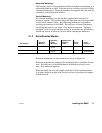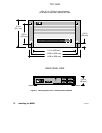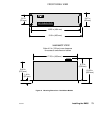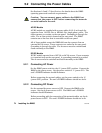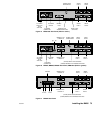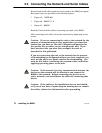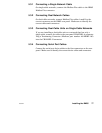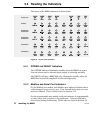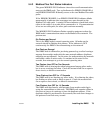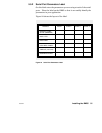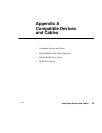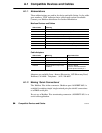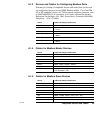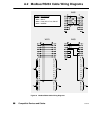
Installing the BM85
31007492
79
5.4.3 Modbus Plus Port Status Indicators
The green MODBUS PLUS indicator shows the overall communication
status at the BM85 node. Two red indicators for ERROR CHANNEL A
and ERROR CHANNEL B identify errors on the two Modbus Plus cable
paths.
If the ERROR CHANNEL A or ERROR CHANNEL B indicator blinks
momentarily, it indicates that a message error was detected on the
Modbus Plus cable path. A steady ON state indicates a hard fault exists,
either in the cable or in a node device connected to it. If communication
is lost on one cable path, the other path continues normally.
The MODBUS PLUS indicator flashes repetitive patterns to show the
BM85 node's communication status on the Modbus Plus network. The
patterns are:
Six Flashes per Second
This is the BM85 node's normal operating state. All nodes on the
network should be flashing this pattern. If the indicator is OFF
continuously, the BM85 is not transmitting on the network.
One Flash per Second
The BM85 node is offline after just being powered up, or after hearing a
message from another node with the same network address (duplicate
addresses are not allowed). In this state, the node monitors the network
and builds a table of active nodes. It remains in this state for five
seconds, then attempts to go to its normal operating state.
Two Flashes, then OFF for Two Seconds
The BM85 node is hearing the token being passed among other nodes,
but is never receiving the token. Check the network link for an open or
short circuit, or defective termination.
Three Flashes, then OFF for 1.7 Seconds
The BM85 node is not hearing any other nodes. It is claiming the token,
but finding no other node to which to pass it. Check the network link
for an open or short circuit, or defective termination.
Four Flashes, then OFF for 1.4 Seconds
The BM85 node has heard a valid message from another node that is
using the same address as this node. The BM85 node remains offline in
this state as long as it continues to hear the duplicate address. If the
duplicate address is not heard for five seconds, the node then changes to
the pattern of one flash every second.



